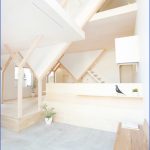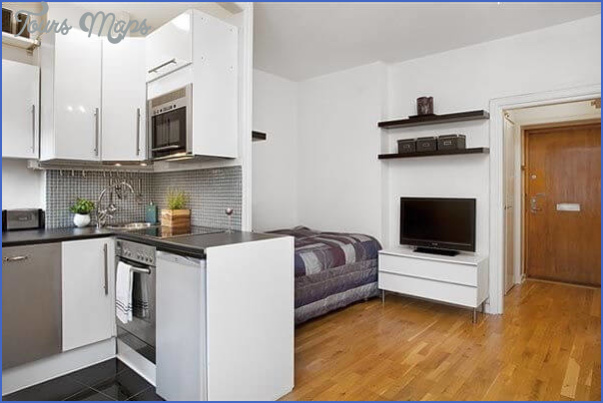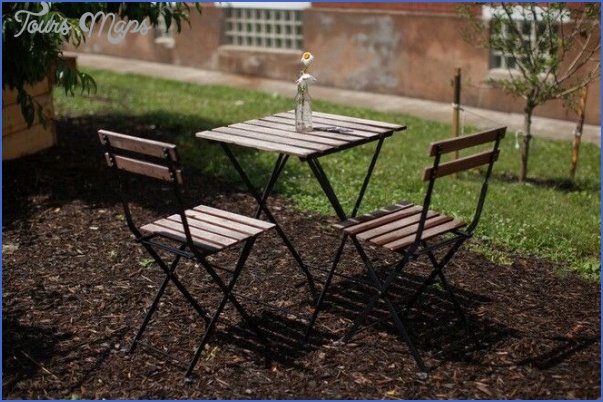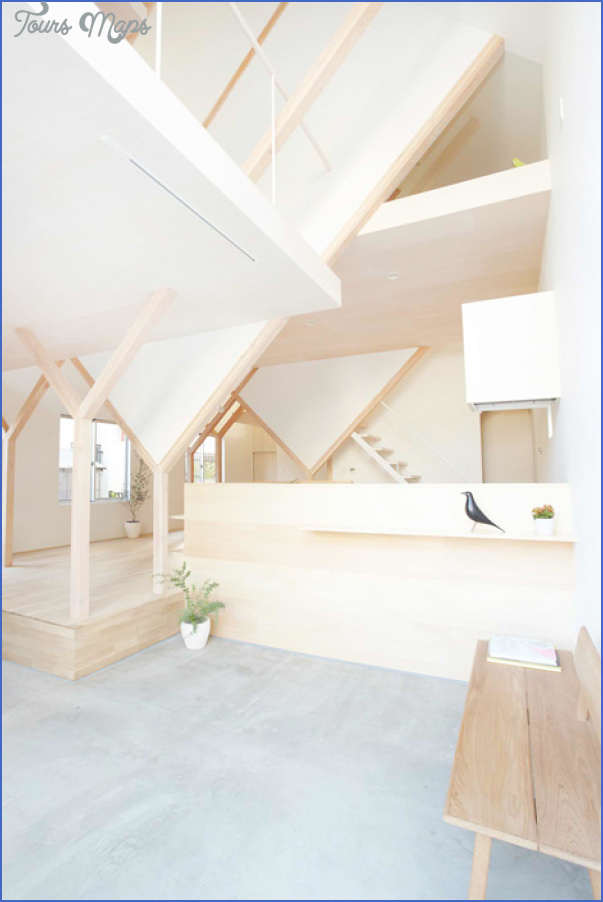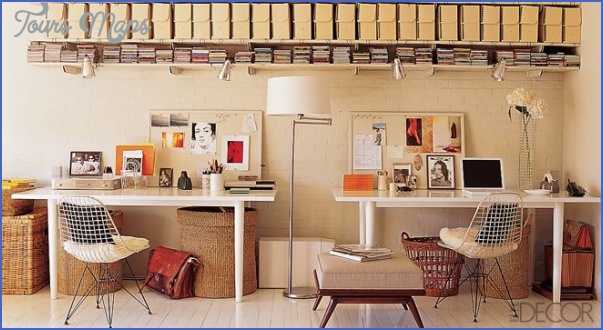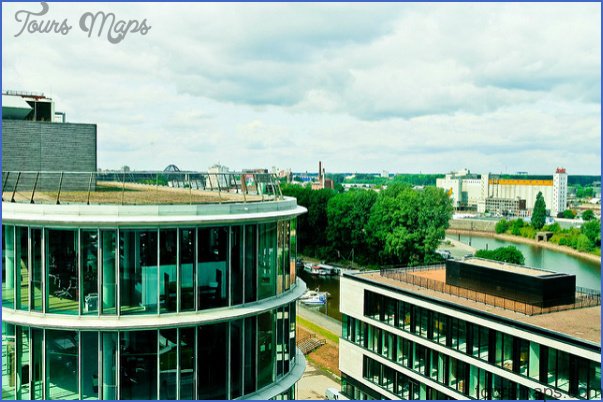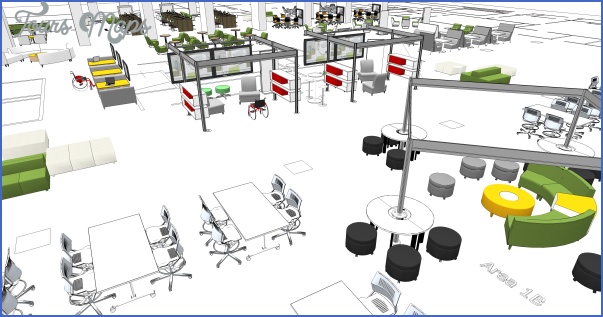Some buildings are relatively simple in spatial terms. When you open the door and walk inside, you can take in the whole interior in one glance. This is the case with some religious buildings, including many temples or cathedrals. It is also true of ancient structures such as medieval hall houses. In these simple buildings virtually the entire life of the inhabitants eating, working, and sleeping took place in a single room. Most buildings, however, are made up of multiple spaces that are either separate rooms or distinct areas linked by arches or similar openings. The most complex buildings are grand palaces, such as Versailles, which have hundreds of rooms arranged in a very particular, formal manner. Suites of rooms are designed to lead from one space to another. The first room is often the grandest and most formal, such as an audience chamber, and the last is the smallest, most intimate room, where the owner would receive close friends and colleagues. The proportions of all these spaces contribute to their impact. In classical architecture rooms often have the proportions of a cube or double cube. Others take the form of perfect circles or have dimensions based on classical formulas, such as the golden section. This underlying geometry gives rooms a formal, ordered character, as opposed to the informality of a small house or cottage.
ORDER AND REPETITION
Another way of arranging space is to use repeating elements of the same size and shape, such as the arches, piers, and windows in a church or cathedral, which combine structural strength with a sense of formality. Arches, in particular, add a different dimension to an interior a sense of interest or even
Rome’s MAXXI art gallery has walkways and bridges that appear to flow across its interior. The building also seems to rise and dip around its oddly shaped site. These features, combined with the pale, curving interior walls, create a sense of fluid space quite unlike that of a traditional gallery with rectangular rooms. houses to be open-plan, so that one space flowed naturally into another an approach that Frank Lloyd Wright also adopted in many of his house designs. Interconnecting spaces, gentle ramps, and big balconies or roof terraces that link the exterior and interior of the building are typical features of houses like these, and the interiors of some modern public buildings are arranged in a similar way. By stretching the concept of what a room is, the fluid interior spaces of these buildings remind us how innovative and exciting architecture can be. mystery. When you see an arch inside a building, you instinctively want to go through it to find out what is on the other side. Arches in Byzantine and Gothic buildings open up new vistas and lead to different spaces to the aisles or side chapels in a cathedral, for example, which fulfil different purposes. If the interior of a cathedral is complex, there will always be a dominant axis that leads to the altar. In many churches this axis is accentuated by elongating the interior, directing your eyes past ranks of arches and piers toward the altar, as at Vezelay or Chartres, both in France. Another way of organizing this kind of space, is to centralize the interior. Many ancient churches, including Hagia Sophia in Istanbul, have a huge central dome, as do some modern places of worship, such as the cathedral at Brasflia. In all these examples the interior space of the building is arranged in a very obvious way. In some structures, however, space is exploited in a more fluid fashion, and this is often the case with contemporary buildings. Le Corbusier wanted his
SPATIAL ORGANIZATION The repeated arches of the abbey church at Vezelay, France (above), direct your eyes toward the main focus of the building the high altar. The arches frame the space, making it formal and regular. The lateral arches also open up vistas of the side aisles and chapels, creating the impression that this large building is in fact a collection of complex and interesting spaces. The cathedral at Brasilia (right) also has strong repeating forms, notably the concrete ribs that form the main structural elements of the building. These work in the opposite way from the arches at Vezelay, converging on a central crown and emphasizing the immense scale of the centralized interior space.
“God is in the detail. This assertion is often attributed to the German modernist architect Ludwig Mies van der Rohe. It meant that every aspect of a building is important, right down to the smallest detail. Put simply, having a great idea is not enough: an architect has to give his or her idea form by making sure that every slab of masonry is correctly positioned, every glazing bar properly finished, every door handle exactly the right shape and that all these details harmonize with each other and with the building of which they are a part. This idea of the building as a whole, in which every detail has to work, has always been a key part of architecture.
ILLUSTRATING BELIEF
For the visitor, examining architectural details whether they be arches, carved capitals, window catches, stained glass windows, or frescoes can be hugely rewarding. They offer fascinating clues to how a building’s creators thought about the structure, how it was used, and what the needs, lives, and beliefs of the people who first used it might have been. Gothic cathedrals provide some of the best examples of the richness of architectural detail because the master masons and craftsmen of the Middle Ages poured their skills and devotion into these amazing works of art, turning them into what they saw as images of heaven on Earth. Carvings around doorways and capitals, stained glass windows, wall paintings, and choir stalls fill these buildings with imagery designed to bring the Christian story to life and provide an inspiring place for worship. Hindu temples and some Buddhist shrines have a similar wealth of imagery. Although some religious or cultural traditions, such as Islam, do not permit representative art, a major mosque adorned with tiles decorated with arabesques and inscriptions from the Qur’an is just as rich visually as a Christian cathedral or a Hindu temple.
SIMPLE AND COMPLEX SPACES Photo Gallery
Maybe You Like Them Too
- The Best Cities To Visit in The World
- World’s 10 Best Places To Visit
- Coolest Countries in the World to Visit
- Travel to Santorini, Greece
- Map of Barbados – Holiday in Barbados



